The BNMA BN Repository
This repository is a resource for posting and downloading Bayesian network models for sharing with others and for providing supporting material for publications. Please respect authors' rights where noted.
Search
12 BNs found.
Predicting Age of Martens From Capture Data
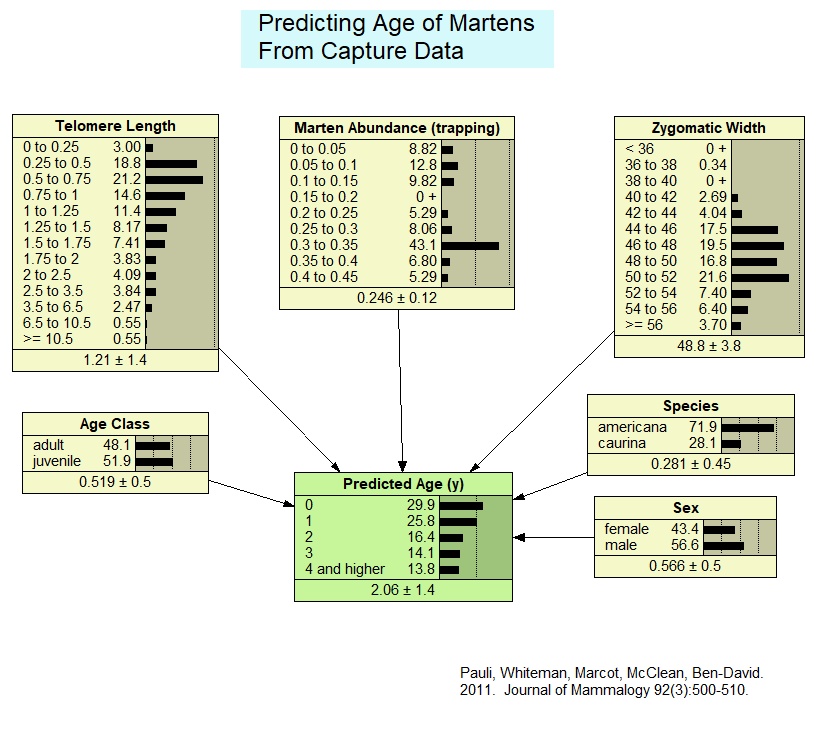
This model derives from a published version, slightly reformatted for testing an application of a Generative Adversarial Bayesian Network (GABN) framework. The model predicts the age of individual martens (members of the weasel family) based on six predictor attributes of marten sex, subspecies designation, zygomatic width (a measure of jawbone size), marten population density (derived from field trapping), telomere length (ends of the chromosomes that shorten over an individuals' life), and general age class (juvenile or adult). The model was initially parameterized with a case file of 399 samples of martens, and then used to generate a fictitious case file using Netica's "simulate cases" function, for testing the GABN approach.
BCA_Microctonus_NG_RiskAnalysis

BAIPA (for “Biocontrol Adverse Impact Probability Assessment”) is a new probabilistic tool that assesses the potential unwanted impact of organisms released in biological control programmes on non-target species.
The BN integrates information on the potential of an insect parasitoid used in biological control to: (1) disperse in new habitats; (2) interact with non-target species; and eventually (3) negatively impact the populations of the non-target species.
The two exemplar BNs on this repository assess the potential of an insect parasitoid released for biological control of pasture weevils in New Zealand (Microctonus aethiopoides) to disperse in new habitats, interact with on-target species (native weevils in the genus Nicaeana) , and eventually negatively impact the populations of the non-target species. Two habitats are assessed, low-intensity grazing pastures (LIP) and native grassland (NG - this model). Both models were built with GeNIe <bayesfusion.co...>
BCA_Microctonus_LIP_RiskAnalysis
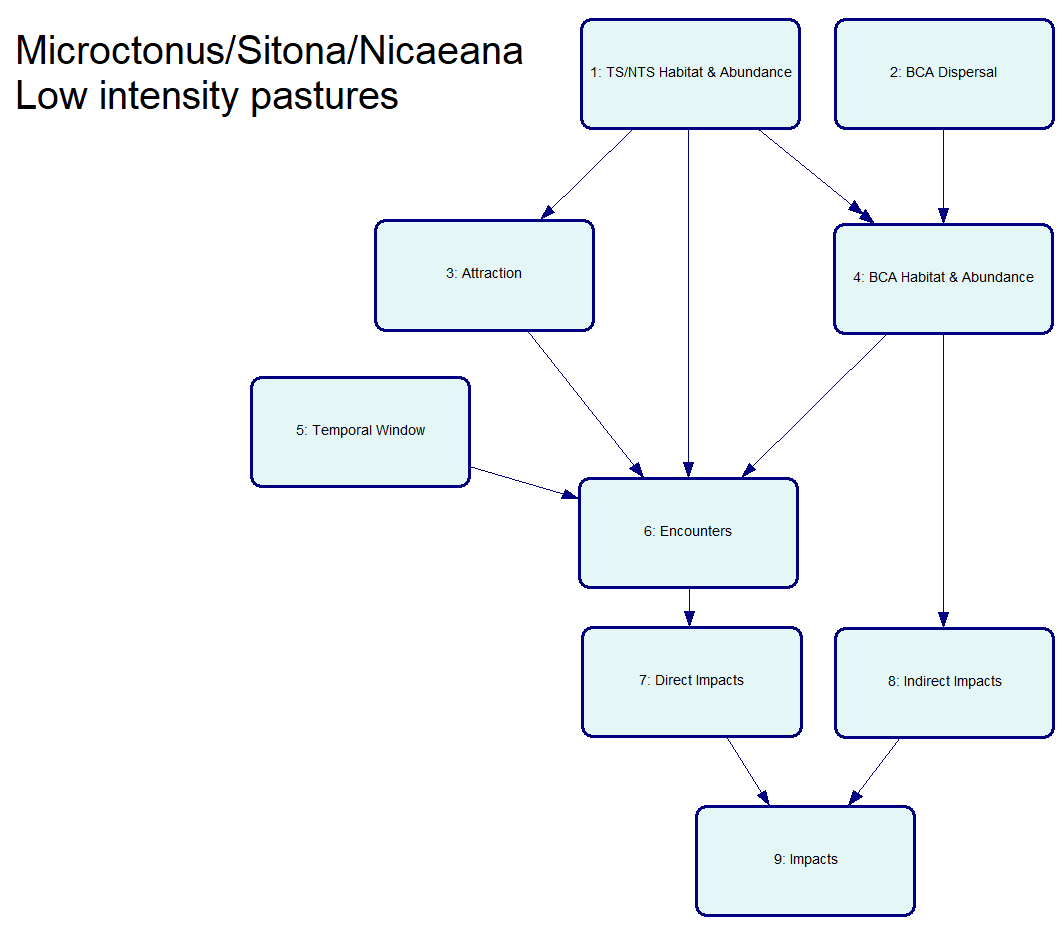
BAIPA (for “Biocontrol Adverse Impact Probability Assessment”) is a new probabilistic tool that assesses the potential unwanted impact of organisms released in biological control programmes on non-target species.
The BN integrates information on the potential of an insect parasitoid used in biological control to: (1) disperse in new habitats; (2) interact with non-target species; and eventually (3) negatively impact the populations of the non-target species.
The two exemplar BNs on this repository assess the potential of an insect parasitoid released for biological control of pasture weevils in New Zealand (Microctonus aethiopoides) to disperse in new habitats, interact with on-target species (native weevils in the genus Nicaeana) , and eventually negatively impact the populations of the non-target species. Two habitats are assessed, low-intensity grazing pastures (LIP - this model) and native grassland (NG). Both models were built with GeNIe <bayesfusion.co...>
FISRAM Freshwater Species 190213

This model is used to determine the degree to which an introduced species of freshwater fish might be invasive and injurious. The model is used by the U.S. Fish and Wildlife Service to help inform on species for potential exclusion of importation.
Arhopalus Flight Activity
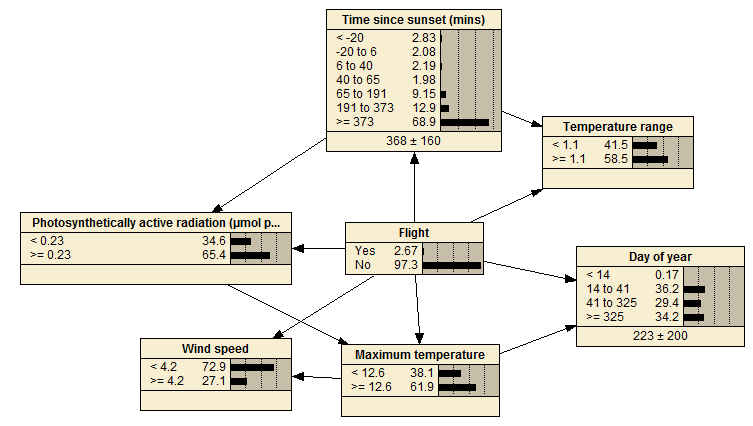
This Bayesian network was developed to model the flight activity of Arhopalus ferus, a wood borer. The model is used to predict flight activity as a function of meteorological conditions. This contributes to the quantification of potential phytosanitary risks as it is a measure of potential exposure of export logs to flying/dispersing insects.
The data set for this model can be found at <abnms.org...>.
Hylastes Flight Activity

This Bayesian network was developed to model the flight activity of Hylastes ater, a bark beetle. The model is used to predict flight activity as a function of meteorological conditions. This contributes to the quantification of potential phytosanitary risks as it is a measure of potential exposure of export logs to flying/dispersing insects.
The data set for this model can be found at <abnms.org...>.
Hylurgus Flight Activity

This Bayesian network was developed to model the flight activity of Hylurgus ligniperda as a function of meteorological conditions. H. ligniperda is a common forest insect within New Zealand Pinus radiata plantations forests. Predicting flight activity is one step towards assessing potential phytosanitary risks of forest exports as it is an indication of the exposure of logs to flying/dispersing insects.
The data set for this model can be found at <abnms.org...>.
Animals

With this network (also available from <www.norsys.com...>) you can enter some characteristics of a particular animal, and watch how the probabilities of its other characteristics (and what type of animal it is) change.
This is just a toy example. For a real-world application, it would have to be extended to include many animals (or plants, bacteria, etc.), probably all from the same environment, or the same subclass, etc. Also, the "Animal" node should probably have an "Other" state.
The fun part of this network is to extend it to include more animals and more characteristics. You may need to define other groupings, such as the "Class" node, in order to keep things manageable. If you make a great network, send it to Norsys; we would love to include it in our library (with the proper credits).
Habitat Suitability
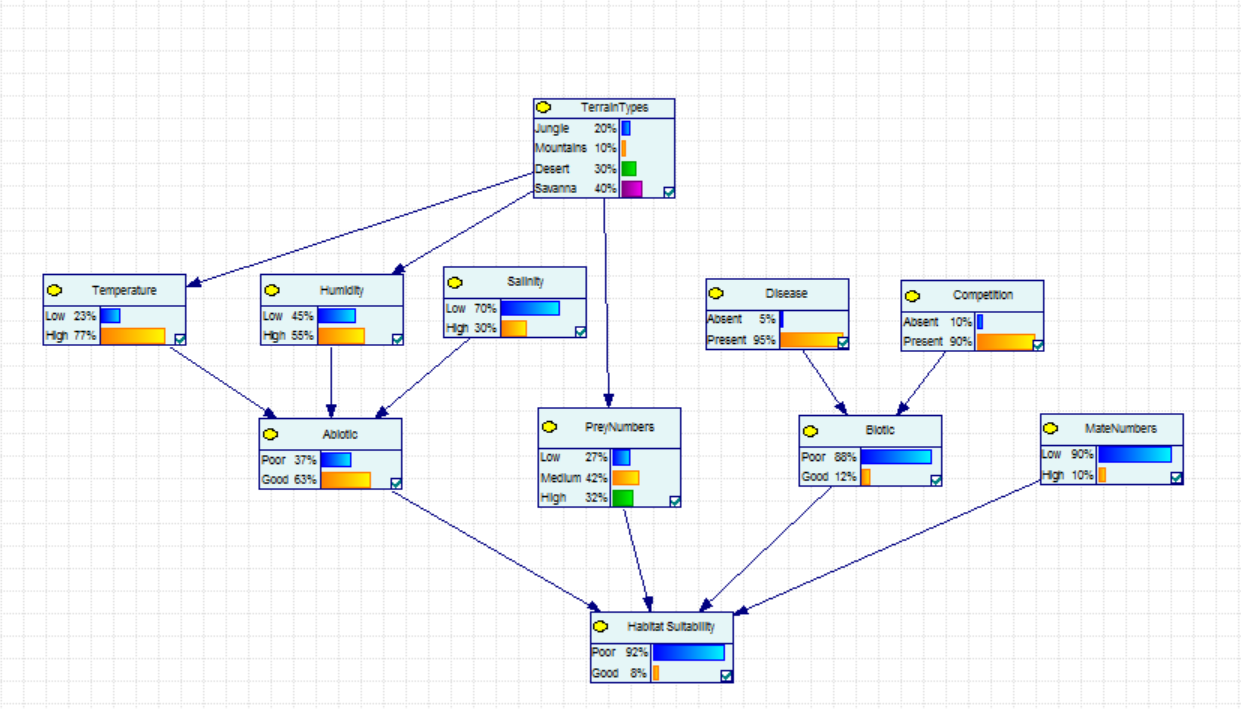
The habitat suitability problem is one where a close to extinct species has to be moved to another country/continent to determine if the species can successfully survive.
In this example, the Sumatran tiger (close to extinction) is to be relocated to central Africa where the habitat is to be assessed for its suitability.
Koalas
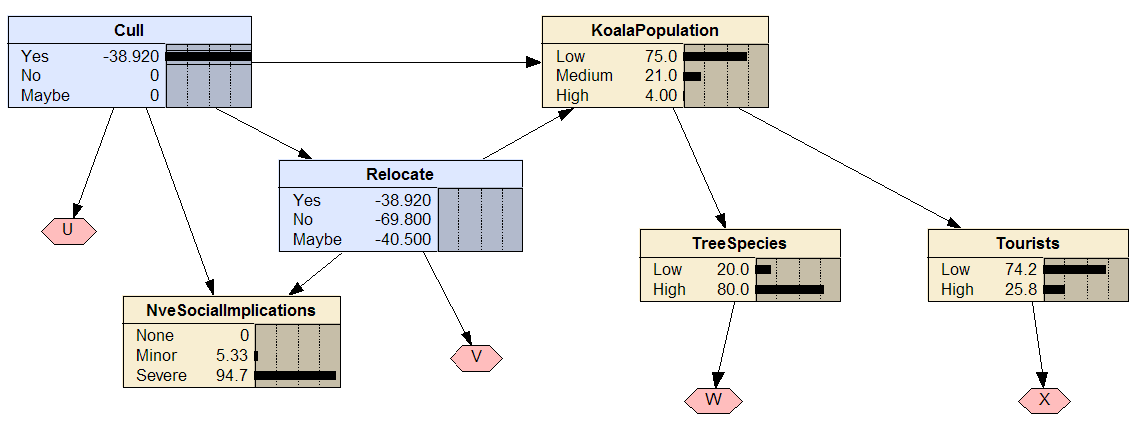
Fraser Island in Queensland did not traditionally house Koala populations. However, since they were brought to the island they have provided benefits and have also caused problems. On a positive note, they are an attraction for tourists providing the island authorities with resources for maintenance. Conversely, they tend to disrupt the flora, even wiping out species of trees if they are not monitored. Thus, in order to maintain healthy populations without damage to the environment, the authorities can decide to cull a number of Koalas (inexpensive) or relocate to the mainland (expensive) where they are already well adapted. Additionally, animal welfare groups do not take kindly to culling.
Note: this is a fictitious example.
Waterhole Fence

An assessment of the expected value of putting in a fence to promote plant survival, in the face of factors that affect the durability of the fence.
Native Fish V1
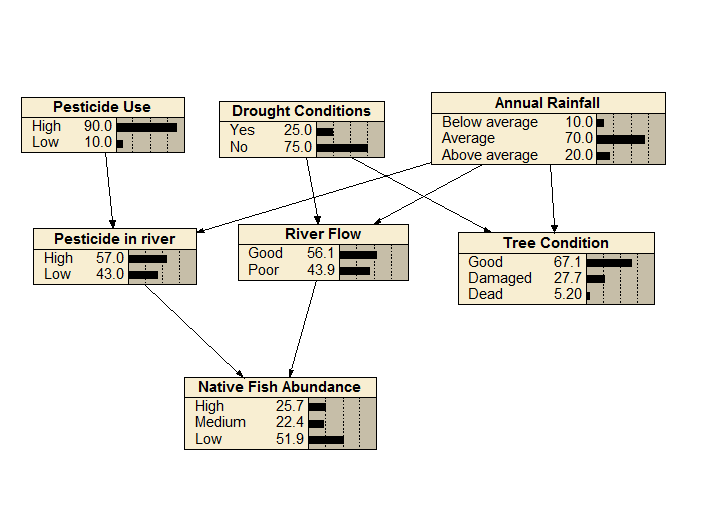
This BN calculates the probability of native fish abundance given pesticide in use and in river, drought conditions, river flow, annual rainfall and tree conditions.
 Bayesian Intelligence
Bayesian Intelligence